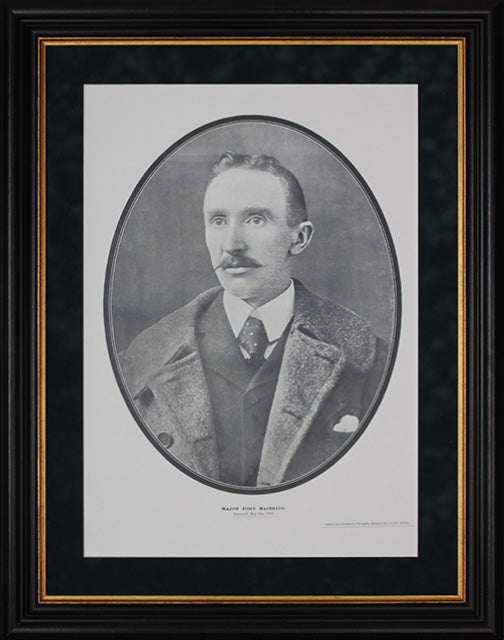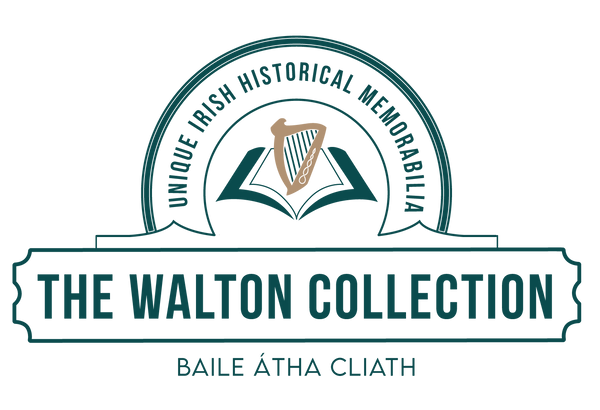The Walton Collection
Major John MacBride - 1916 Poster
Major John MacBride - 1916 Poster
Couldn't load pickup availability
Rare John MacBride 1916 commemorative poster.
John MacBride was born on the 7th May 1868 and was an Irish republican and military leader who was executed for his participation in the 1916 Easter Rising.
Born at The Quay, Westport, County Mayo, MacBride was educated at the Christian Brothers' School, Westport, and at St. Malachy's College, Belfast. He was given the nickname "Foxy Jack" because of his sharp looks and red hair.He studied medicine for a period, but gave it up and worked with a chemist's business in Dublin. He joined the IRB and was closely associated with Michael Cusack in of the Gaelic Athletic Association at its foundation. He was also a member of the Celtic Literary Society where he met Arthur Griffith who became a close friend and a major political influence on his life.By 1893, MacBride was already known as a "dangerous nationalist" by the British aithorities and visited to the United States on behalf of the IRB in 1996. Later that year he returned and subsequently emigrated to South Africa where he took part in the Boer War on the side of the Boers. He was resposnible for starting up the Irish Transvaal Brigade and was given the rank of Major in the Boer commandosc, in addition to citizenship of Transvaal. In Ireland Arthur Griffith and Maud Gonne, had done much to promote the Boer cause led to the Irish nationalists being the most vocal pro-Boer supporters in Europe. Despite this more than 16,000 Irishmen fought, many of whom died, in the British army's brutal conflict against the Boers. MacBrides' citizenship of the Transvaal and his aid to their enemy was considered highly treasonous by the British authorities.
In 1903 ,following the Boer war, he went to Paris where he met and married Maud Gonne in 1903.They had just one child, Sean MacBride, but the marriage ultimately failed and they divorced in Paris. After returning permanently fto Dublin in 1905 MacBride joined other Irish nationalists in preparing for an revolution however because he was already well known to the autorities in Dublin, the leaders thought it wise to keep him outside their secret military group which was imminently planning the rebellion. It was for this reason that he found himself in the in middle of the Rising without having any prior knowledge of it . He was in Dublin early on Easter Monday morning and heading to meet his brother Dr. Anthony MacBride, who was arriving from Mayo on the train to be married on the following Wednesday. MacBride was walking up Grafton Street when saw Thomas MacDonagh in full uniform and leading his batallion. Without hesitation he immediately offered his services and was duly appointed second-in-command of the batallion which was on its way to the Jacob's factory building.
MacBride was court-martialled a>fter the Rising surrender and executed by firing squad in Dublin's Kilmainham Gaol on the 5th of May. As he faced the firing squad, he said to the offcier in charge that he did not wish to be blindfolded, bravely stating that "I have looked down the muzzles of too many guns in the South African war to fear death and now please carry out your sentence".
Originally printed and published by O'Loughlin, Murphy and Boland, (photo uncredited) , the text below the photograph simply states: "MAJOR JOHN MacBride , Executed, May 5th, , 1916". A remarkable reproduction on 210 gsm satin art paper , beautifully mounted on a mottled green suede background and set behind glass in a handmade, aged dark mahogany finish frame with a gold gilt sightline.


